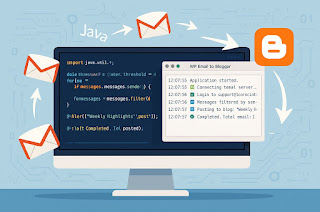To develop and implement EDI integration solutions between Practice Q, RingCentral, LabCorp, AI scribes, Adobe, and other platforms used in clinical practice, you would follow these key steps:
### 1. **Requirements Gathering**
- **Identify Business Needs**: Understand the specific business processes that require integration, such as appointment scheduling, lab order processing, scribe data exchange, and document management.
- **Data Exchange Requirements**: Determine the data that needs to be exchanged between the systems, including the format (e.g., HL7 for clinical data, X12 for billing) and the frequency of exchanges.
### 2. **EDI Standards and Protocols**
- **Choose the Right Standards**: Select appropriate EDI standards and protocols that each system can support (e.g., HL7, X12, JSON, XML).
- **Compliance**: Ensure that the integration complies with healthcare regulations like HIPAA.
### 3. **System Mapping**
- **Data Mapping**: Map data fields between systems, ensuring that each platform can correctly interpret the data it receives.
- **Transformation Logic**: Implement data transformation logic to convert data formats as required by different platforms.
### 4. **Integration Development**
- **Middleware Selection**: Choose a middleware solution or EDI translator (e.g., Dell Boomi, IBM Sterling) to facilitate data exchange.
- **API Integration**: Develop API integrations where necessary, especially for platforms like RingCentral and Adobe, which may use REST APIs.
- **Custom Connectors**: If pre-built connectors don’t exist, develop custom connectors to facilitate communication between systems.
### 5. **Testing and Validation**
- **Unit Testing**: Test each component of the integration individually to ensure it functions correctly.
- **End-to-End Testing**: Conduct comprehensive testing to validate that data is being transferred accurately and securely between all platforms.
- **Error Handling**: Implement error-handling mechanisms to manage and resolve data exchange failures.
### 6. **Deployment**
- **Environment Setup**: Prepare production and staging environments, ensuring that they mirror the testing environment.
- **Go-Live**: Deploy the integration in a phased approach to minimize disruptions in clinical practice.
### 7. **Monitoring and Maintenance**
- **Ongoing Monitoring**: Set up monitoring tools to track data exchanges, performance, and errors in real-time.
- **Continuous Updates**: Regularly update the integration solution to accommodate changes in business requirements, software updates, or regulatory changes.
### 8. **Documentation and Training**
- **Document the Integration**: Provide comprehensive documentation covering the architecture, data flows, error handling, and troubleshooting procedures.
- **User Training**: Train the end-users and IT staff on how to manage and use the integrated systems effectively.
### 9. **Security and Compliance**
- **Data Encryption**: Ensure that all data exchanges are encrypted to protect sensitive information.
- **Compliance Audits**: Regularly conduct audits to ensure compliance with healthcare regulations and industry standards.
By following these steps, you can successfully develop and implement robust EDI integration solutions tailored to the specific needs of clinical practice platforms.
Subscribe to:
Post Comments (Atom)
Java Blogger API, Gmail Java Automation, Auto Post Emails to Blog, Blogger Java API, Gmail to Blogger Java, Blogger API Tutorial, Java Swing Email App, Email Automation Java, Jakarta Mail Java Example, Java Gmail Automation
Dears Good Day Recently, I have been working on a personal project, and I would like to share the implementation details regarding...

-
Inbound Flow: 1) The inbound, EDI data needs to be collected. 2) The collected data should be De-enveloped (removing the headers) to get t...
-
Sterling Integrator Administaration Related Interview Questions : ...
-
Encoding Conversion (From ISO8859_1 / ISO-8859_1 / ISO_8859_1 to UTF8 and vice versa) There is one service called “Encoding Conversion” in...




No comments:
Post a Comment